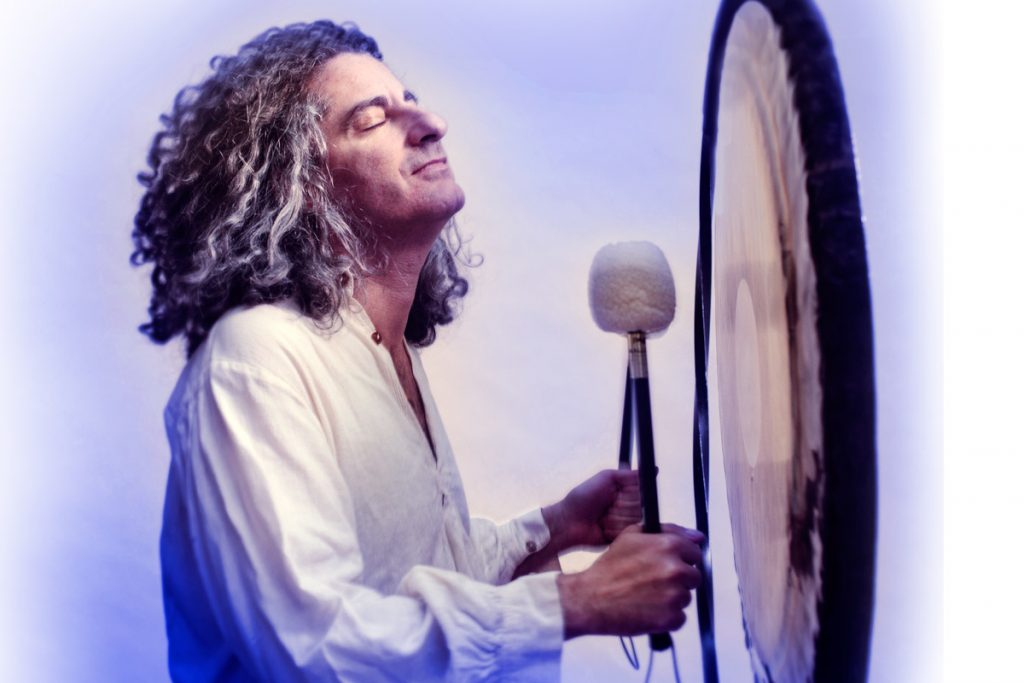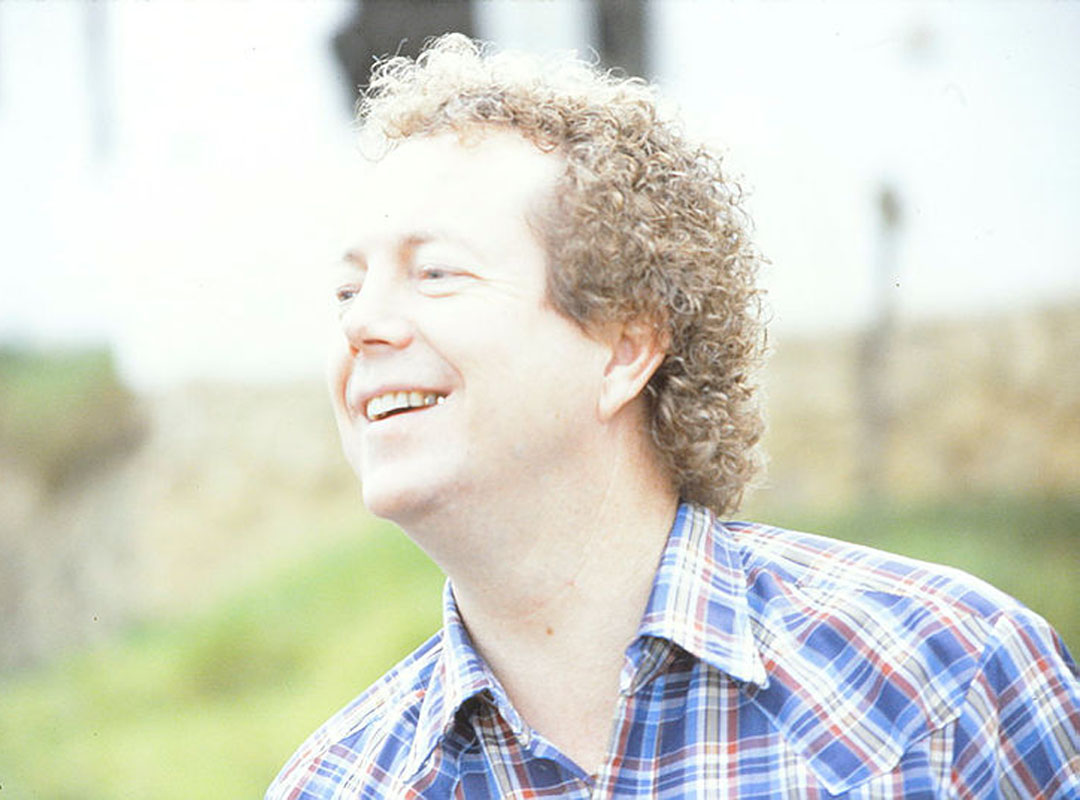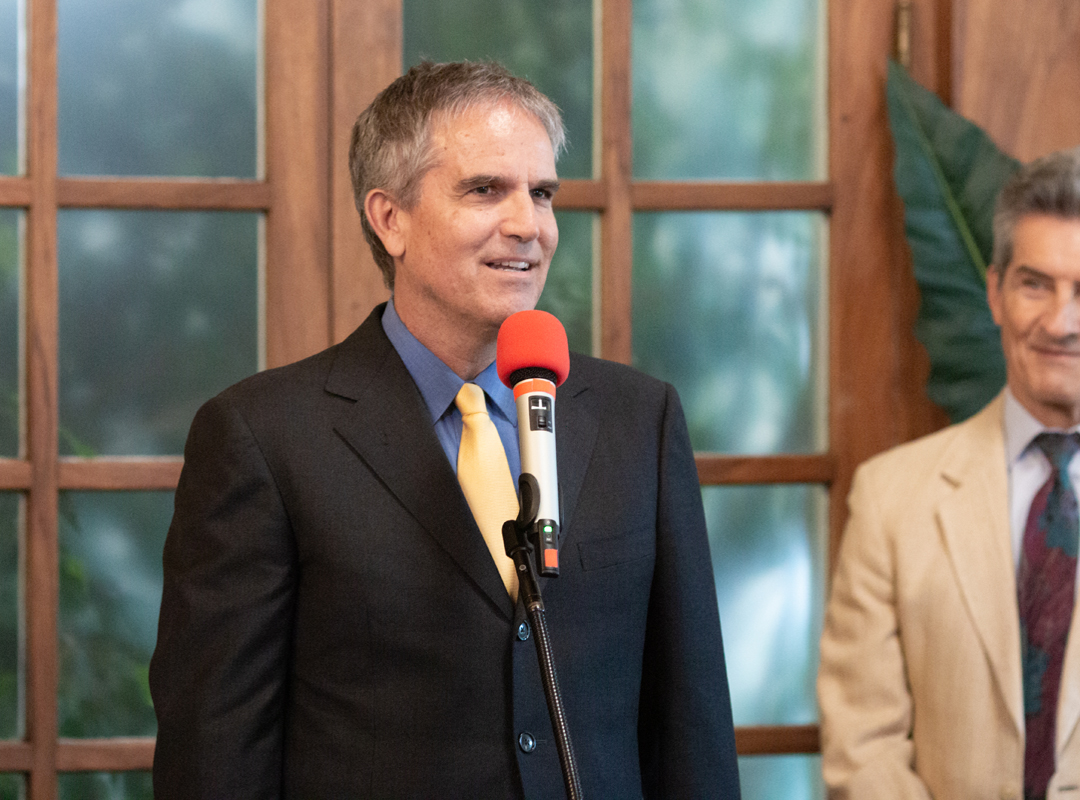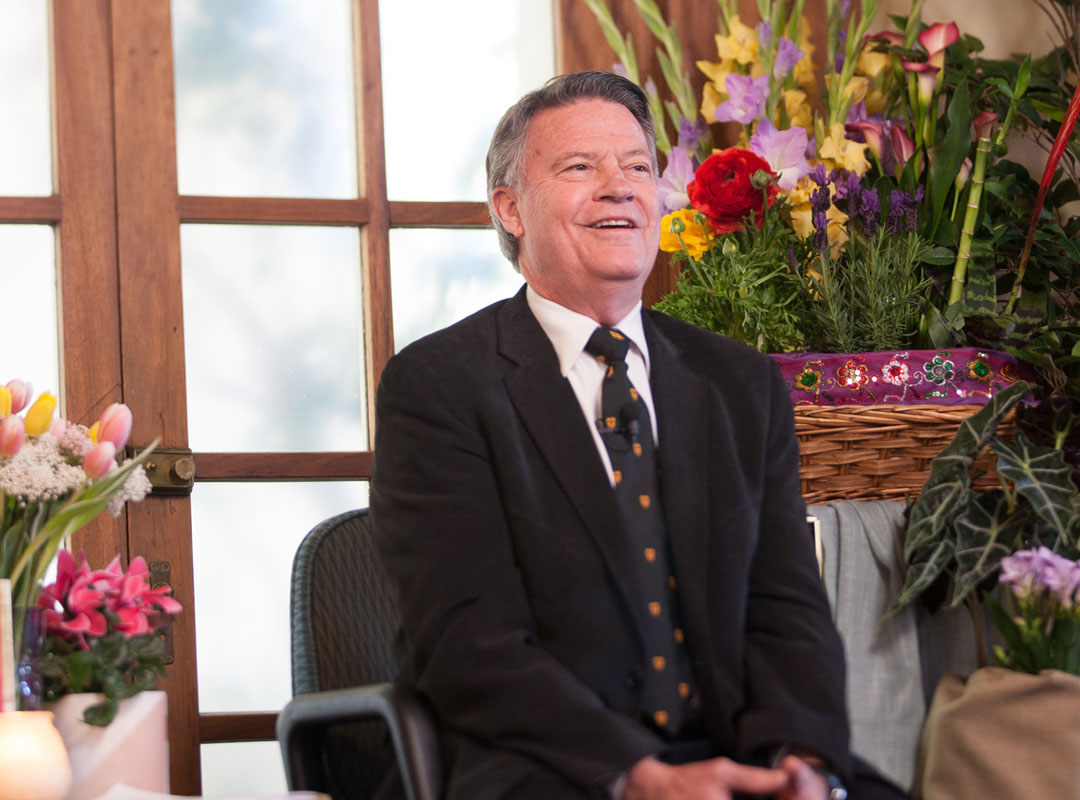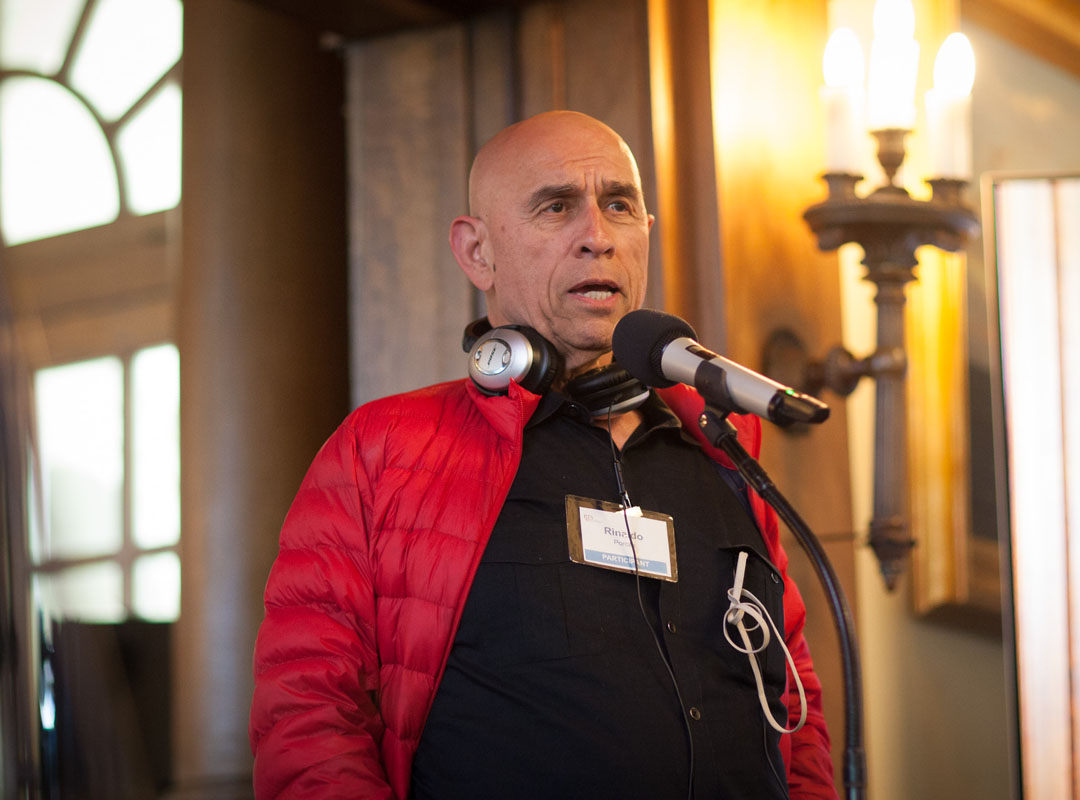Alexandre Tannous has been active as a musician, educator, composer, and as an ethnomusicologist. His compositions are frequently performed in the United States, Europe, and in Asia. As a musician, he has performed a variety of musical styles including classical, jazz, rock, and non-Western music. Alexandre is also active as an ethnomusicologist. He has conducted fieldwork for 17 years in over 40 countries around the world. For the past eleven years he has been researching the therapeutic and esoteric properties of sound from three different perspectives—Western scientific, Eastern philosophical, and shamanic societal beliefs. This has lead him to design a protocol of an integrated experience he calls “Sound Meditation” in which he shares the findings from his research, raising an awareness to how a specifically designed sound can have the ability to help us to disconnect from habitual patterns, and guiding people in how to disconnect from the mind while listening to the traditional instruments he plays. He currently works as a sound therapist and teaches this practice. He has recently been featured at the PTS class, IHOP-4: Journey into the Sound Current of God.
New Day Herald: Let’s start with the big question first. What is sound?
Alexandre Tannous: Sound is vibration, oscillation and pulsation. Most people think that sound is just vibration. It is, but it’s not just that. They often neglect to mention that it’s also oscillation and pulsation.
Vibration is really complex. The best way to understand it is by thinking that when you play a gong, for example, that metallic membrane starts to vibrate when you hit it with a mallet, and this causes the metallic molecules to be excited, and to vibrate. This excitement causes the air molecules around the gong to heat up, and the vibration comes out of the membrane of the gong in the form of waves. The distance between one wave and another is what we call Hertz (Hz), or cycles per second. When we say that a sound frequency is 1600 Hz it means that the wave occurs 1600 times per second. This vibration reaches our ears and causes the microscopic hairlike cells, or cilia, in our ears to vibrate, and to transmit this in nerve impulses to the auditory cortex in the brain. What happens in the auditory cortex is a very complex mechanism that we don’t know much about.
NDH: I think of sound as vibration…but light is also vibration. John-Roger, the founder of MSIA, has said something interesting: that you can live without the Light but you can’t live without the Sound. It seems as though sound is a more primordial or direct force than Light. If they’re both vibrations, what’s the difference between light and sound?
Alexandre: Light is a faster, higher rate of vibration. And that would apply whether you’re talking about the spectrum of visible light, or infrared, or ultraviolet and on up. The more you speed up this vibration, the more you change realms until you get to x-rays and beyond. So many people say that sound is more important than light. And why would that be? Is it because it causes more fundamental change in solid objects, and beings, and everything that’s material? But then probably light can affect that as well. There is something called light therapy, that some experts are experimenting with. These are things that we need to learn more about. The problem is that we don’t have the proper tools and the science to understand it.
Science is starting to take sound seriously. We can see where scientific studies in the medical field have shown how sound can help people heal. But there’s still so much research that needs to be done. One would almost have to take a multidisciplinary approach to understand this subject area, like a medieval scholar who didn’t just know about one thing. They would know about poetry, geometry, cosmology, medicine, sound, etc. When one is trained in this system, one thinks in a completely different way about reality and the universe that we experience.
Many traditions talk about this mysterious, esoteric aspect of sound: the primordial OM, or what’s called in Hinduism Indra’s “net of jewels” (Indra is the god of thunder and lightning), or the concept of akasha, or in the Bible: the Word, the Logos, Music of the Spheres, the Big Bang. If we were to think of how sound could start the universe, and how could that sound be heard, I think it’s a metaphor probably referring to the idea that the world as we know it exists because of sound or vibration. It’s greatly misunderstood, this connection between sound and the way we experience reality, as though there is some form of manifestation coming out of sound, out of language, out of all the sounds that we hear. That probably explains why sound has been used in all spiritual realms—religious, sacred, indigenous, shamanic. It’s THE most powerful tool. Sound has served humanity probably more than any other tool. Some people might add dance to it because there’s transcendence also through dancing, but you need sound for dance to happen.
NDH: To me, it’s interesting that light can come solely externally. That is, you can have a form in the physical world that doesn’t emanate light. But sound goes through all forms and can emanate from within all forms. So it can be more internal, and more powerful, because light can bounce off of objects, whereas with sound both the receiver and giver have to be vibrating. With light you can have a vibrating source, or giver, and a non-vibrating object, or receiver.
Alexandre: Yeah I agree. And also sound can be experienced in two different ways. If a person is toning or vocalizing, they are able to experience the sound that they are generating through the auditory sense, but also through the tactile sense—through bone and tissue vibration, the movement in the body. That’s something that we’re not always aware of when we listen to music, or to any sound source, because we mostly experience it with our ears. But we’re unaware that the body is also experiencing it, but it is very subtle. And because the auditory aspect is more present, we think it’s strictly auditory, but it’s actually not. There is a very subtle felt perception in the body, and if one observes this in a meditative state, with any sound coming to the body, or from the instruments that we use in sound therapy, one can feel the body responding. And the lower the frequency is, the more it can be felt in the body. If we go below the threshold of hearing, which is 20 Hz, we get to sound that we can only experience in the body, and not with the ear.
NDH: So the sound meditation that you do involves listening to external sounds. Does it also involve internal sound, and how would that relate to the external sound?
Alexandre: I like to use instruments that produce harmonic overtones, or instruments that produce harmonic overtones in clearly audible levels—that would be a more correct way of saying it because really all instruments have overtones. I use gongs, Himalayan singing bowls, and overtone singing, among other things. Sound is a dimension—that’s the way I perceive it. If we focus on the harmonic overtones and on the complexity of the overtones, we can merge into that dimension. That harmonic series, which includes all the overtones, is sometimes referred to as “the living God,” or the “stairway to heaven” in the esoteric philosophies. It includes the basic note, and then all the auxiliary overtones that go along with it. We become one with it. And as we are meditating listening to sound, it helps the body to go through various changes. The brainwave cycles diminish, and the autonomic nervous system is being affected, including the Heart Rate Variability, which is how the heart communicates to the brain and how the person is feeling emotionally. The Vagus nerve is being affected. The neurochemistry is affected. I believe this is where the sound becomes an internal sound.
I interpret this in a unique way: When we listen to specifically designed sound, we can go into a transcendental state where we lose awareness of the self, or we become that which we’re observing, and we no longer are aware of the observer. We become the sound that we’re listening to. This is a very key point that happens a lot in deep meditative states where one is using a mantra or sutra or focusing on the breath, but these states are very hard to attain without the sound. I’ve found sound to be very effective in achieving that state, through listening judiciously and attentively to these instruments as they’re being explored. And while the meditator is informed about how to best make use of the sound and how to listen, the magic is always in how people listen. This is why I always tell people that they need to listen judiciously. I talk about the specifics of the overtones and demystify certain concepts and explain things, because if I’m playing the instruments and people aren’t listening in a specific way, they’re not getting the best of what the instruments are providing.
The listener is the most important part of the equation. There are things that the sound does, things that I do, and things that the individual can do as an active participant. This is where I like to focus on the listener, and that’s why I inform them of various things that are essential to know more about sound, so that they get to this place where they are experiencing the inner sound, which is basically a transformation almost like an alchemical transformation where we become sound. And that’s deeply meaningful. It’s almost like going back to the source where there is no I, no observer, and we become it. But the strange thing is that as we go deeper into this, we get into a place where not even sound exits anymore. We become everything and nothing. This is what the Sufis call al-fana’, which is a state of complete ego dissolution, a state of non-duality where they merge with God within, beyond any of the fractals that we experience and that keep us trapped in maya, which is an infatuation with the material world.
NDH: It sounds similar to the MSIA technique of Spiritual Exercises where we do both chanting and listening. Chanting is like establishing a tone, like if you’re creating an outer sound by playing the gong or other instruments; and then there’s listening, and it’s in the listening that you travel or merge.
Alexandre: And we all have so much to learn about listening. There are many different layers of listening, where we go into our heart. It’s the conditioned mind that keeps us trapped in this illusionary state. It’s a combination of all the conditioning that we’ve gone through, all these thoughts that keep us trapped in what we think reality is. The exit is using sound as a tool to stop the discursive thinking, the monkey mind, to get to the divine within. When we are working with sound through toning, there is an ego involved because there is an action. I’m deciding to do this for a specific reason. But as we’re having that experience of vocalizing or toning, we’re also listening. So we have two things happening simultaneously, the act of using the positive side of the ego, a “good” ego, and also focusing our effort on the best that we can do to eventually lead to an experience. The experience is the most important part of the equation, because the experience can help things unfold within us and can give us an understanding beyond any number of words.
We become self-propelling entities to transcendence, toward something that’s going to create a change. That change is on a vibratory level, and that will connect us to our heart, because there is a fundamental essence within us that will lead us toward truth, toward good. But when we’re not aware of that, when we’re busy, when we’re distracted, when we’re stuck in suffering, we may manifest the opposite. And this is why it’s very important to have a spiritual practice, a discipline.
NDH: In our IHOP class you’ve talked a lot about the differences between the tempered and non-tempered musical scales, and their relationship to other levels of consciousness and spiritual practices. Can you tell us about this?
Alexandre: Equal temperament is the division of the octave into twelve equidistant steps, which are the notes that we use to form musical scales. In an octave that isn’t equally tempered, these steps aren’t equal, or equidistant. In other words, if the whole octave is divided into 1200 “cents,” which are units of measure, each of the 12 steps would be 100 cents in an equal tempered octave. But in a non-equal tempered octave, these steps would not all be equal to 100 cents. In actuality, a “natural” scale—that is, notes as they occur in nature—follow this non-equal temperament. All sounds in nature have a basic note, let’s say a C note on a plucked string, and then overtones, like E and G which are subtler tones that are created when the string vibrates, and are in harmony with the base note. These harmonic overtones are used to form the notes of our musical scales—but as they occur in nature, they are not exactly equal to the 100-cent steps. Some intervals between the notes may be equal to 102 or 104, or 98 or 96 cents.
That was problematic on the level of tuning an instrument, such as a keyboard, in one tuning that allows you to play in all keys. A piano tuned correctly in the key of A, where A is the tonal center from which everything else harmonizes, might sound slightly “off” in the key of B, because when you start from B, the natural harmonic overtones will be in slightly different places—a few cents off either higher or lower. You might not hear this difference, but when you get all they way up to the key of G, the differences would be many cents, and it would sound way off-key. The solution was to just divide everything equally all along the keyboard, so that all the steps are just slightly off, but not enough so that most people notice it. That’s equal temperament.
That’s where we lost the magic, because we intuitively sense that there’s something slightly “off,” and the music doesn’t completely harmonize with the frequencies of nature, and the natural frequencies of our bodies. Now, this happened in the western world, but it didn’t happen in all ancient harmonic systems that have been around for who knows how long.
Non-equal tempered scales impact consciousness in a dramatically different way. In the west, after the equal temperament was imposed, we lost the state of trance, the ecstasy or euphoria of transcendence, because sound was disempowered. Some people may not be aware of it and say the sound is just adjusted a little bit. But that makes a big difference because this true harmony that nature gave us, and that is part of us, is lost. Even a musician who is trained in the classical conservatory system will always intuitively play in non-equal tempered scales if they are playing an instrument that allows for that, such as fretless instruments like violins and cellos, or when they’re singing. When we sing we always gravitate towards this natural harmony, these true mathematical ratios that are part of a non-equal tempered octave.
NDH: Have there been any experiments done to test the different physiological effects of listening to this natural music vs. the equal-tempered music?
Alexandre: Absolutely. There have been many experiments and many contemporary composers have experimented with that. They include Lou Harrison, Harry Parch, Terry Riley. Some of these composers studied Indian classical music or Turkish, Arabic and Persian classical music. Some of the Asian musical traditions have microtones, or more notes in between the tones that we are used to as the normal scale in the west. In Turkish music there are nine tones between C and D instead of two tones in the Western octave (C to C sharp, and C sharp to D). They created a system based on natural harmonics that are part of the blueprint of sound which is the harmonic overtone series that we were talking about as the source of the non-equal tempered scales. Now of course people back then didn’t know anything about physics and acoustics and mathematics. But they felt that. In an intuitive way we manifest that which we need to expand our consciousness.
Different scales, especially those with microtones and based on natural harmonics, have a different “ethos,” which would be the distinguishing character, personality or spirit that can evoke emotions within us in a very specific way. That’s what happens in the Indian raga system, and in central Asian and North African music, Middle Eastern music (and that’s throughout the region, regardless of religion) and also in Byzantine liturgical chants. These are highly engineered harmonic systems that assist us to transcend and become part of sound in a unique way. These are actually mathematical ratios that evoke emotions within us. This is fascinating to me—that there is a different way to journey inwardly with these different scales and harmonics. Sound leads us to God within. All these scales, because they have more notes within an octave, or fewer, have different intervals between the notes. These are called microtones, which are notes in between what we see as the keys on a piano, can have even smaller intervals. What I always tell people is that focusing our awareness on the space between the notes, or the interval, is more important than focusing on the notes themselves, because it’s the intervals that give a scale its distinguishing characteristics, its ethos. It’s a shifting of focus. ‘
In these Middle Eastern and Indian cultures you don’t have the separation that exists in the western world between performers and an audience of passive listeners. There’s a certain etiquette of listening. The listeners have a stock of words and expressions, including hand gestures and head gestures, that they use to indicate how much they’re being moved by the music, to indicate to the musician that “we’re with you, we’re feeling and sensing everything.” This would encourage the musician to play more and to play better, because there’s an attunement with someone who cares. The distinction between audience and performers dissipates little by little, until there is a oneness. This happens all the time, and is the ultimate goal. And if this doesn’t happen, the musicians may not have a good experience and may not give a good performance because there aren’t judicious listeners.
NDH: It’s interesting that in music we talk about the fundamental tone, and then the series of overtones that come out of that, which vibrate in harmony and are used in the individual notes of a scale. Many spiritual scriptures and lineages, especially sound current lineages like MSIA, talk about a fundamental tone, like the HU, as being the foundation of creation, originating in the highest levels of consciousness, and then the lower levels manifesting out of that, and we chant the tones of the different levels as we progress. It almost seems as if sound on the physical level has many of the same characteristics as the sound on the inner realms of consciousness. Is there a relationship between the two?
Alexandre: This is deeply esoteric knowledge when we talk about the connection between the harmonic overtone series and the dimensions of consciousness. Basically we have a fundamental frequency which is the starting point, and we have finer frequencies that are called overtones that are above that fundamental frequency. They’re involved in how we hear the fundamental frequency because they constitute the tone color or timbre. That’s what makes a note on a ukelele sound different from the same note played on a violin. This overtone series is based on mathematics. The first overtone is always an octave higher than the fundamental, the second overtone is a fifth higher, then a fourth, and it goes on and on. It’s an infinite series. It’s based on the doubling of the frequency. So if the fundamental frequency is 200 Hz, the first overtone will be 400 Hz. The second will be 800 Hz, etc. There are also inharmonic overtones which are not based on doubling the frequency. As we move up to higher and higher overtones, they become closer to each other and weaker as we listen to them. A gong, for example, can emit a wide spectrum of these overtones, maybe 100 of them. The overtones that are most clearly audible are the lower ones because they have the greatest amplitude. As the mind quiets and as we become more fully aware of all of these overtones, we are able to perceive the weaker overtones. As we can listen in a more fine-tuned way, there is more presence in our awareness, and we let go of the lower levels of thinking, the monkey-mind that creates our reality. This is why spiritual practice is important, so we can disconnect from the consensual reality—what our minds agree is “real”—and go into transcendental reality. That can reveal the mind for us, that can teach us, and that can connect us to the God and the teacher within. That’s almost like a different realm, and sound is used to get to that realm.
So the mind quiets down when we are having an experience with finer and higher overtones. As we go higher, we’re more able to notice the very high and subtle overtones that are non-existent to the untrained ear, and that are masked by the louder, lower overtones. As we become aware of the finer and finer overtones, it’s almost like going through an alchemical transformation. The real alchemy isn’t about the literal changing of heavy metals into gold, but it’s about using spiritual practice to sculpt the self, to fine-tune the human awareness and consciousness so that it becomes finer and more subtle. That is inherent to transcendence and spirituality, to becoming more present, aware, resonant, and therefore compassionate, empathetic, loving and kind. We become aware of what’s always been here, but we weren’t aware of it— a world within a world—and we go beyond the mundane and we reach the realms of the higher spirits and the higher self.
Read the complete NDH May / June 2016 Edition via ISSUU







